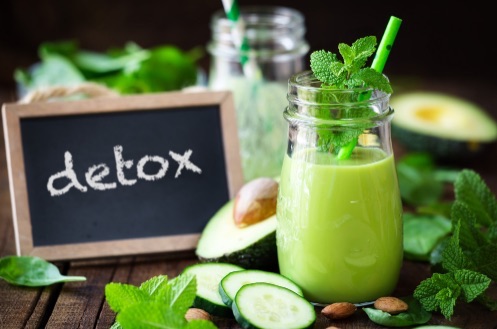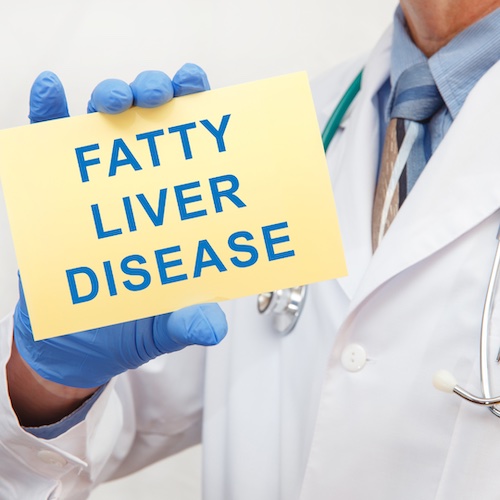Fatty liver, also known as hepatic steatosis, is a condition where excess fat accumulates in the liver cells. The liver is responsible for various essential functions, including detoxifying the blood, processing nutrients, and producing bile for digestion. A healthy liver has some fat, but when the fat makes up more than 5% to 10% of the liver’s weight, it is considered a fatty liver.
Related article
Ayurveda Liver Detox – An Easy Liver Cleansing Guide
Benefits of Bhringraj or Eclipta Alba for Hair, Dandruff, Liver, and Skin
Rohitaka Health Benefits and Uses- Liver
Chitraka Health Benefits – Liver
Benefits and Uses of Punarnava or Boerhavia Diffusa
Health benefits of Kutki for liver detox and fatty liver
Table of content
Fatty liver according to Ayurveda
Ayurvedic Remedies and Herbs for Fatty Liver
Lifestyle Changes for Fatty Liver
Dietary modifications for Fatty Liver
Types of Fatty Liver
There are two main types of fatty liver:
Alcoholic fatty liver disease (AFLD):
This type is caused by excessive alcohol consumption. When the liver breaks down alcohol, it generates harmful substances that can cause inflammation and damage liver cells, leading to fat accumulation.
Non-alcoholic fatty liver disease (NAFLD):
This type is not related to alcohol consumption and is more commonly associated with obesity, insulin resistance, high blood sugar, and high levels of fat in the blood.
NAFLD is further categorized into two subtypes:
- Simple fatty liver: This is a relatively benign condition where there is fat accumulation but little or no inflammation or liver cell damage.
- Non-alcoholic steatohepatitis (NASH): This is a more severe form of NAFLD, characterized by liver inflammation and cell damage along with fat accumulation. NASH can progress to cirrhosis (advanced scarring of the liver) and liver failure.
Fatty liver often does not present any symptoms in its early stages. However, as the condition progresses, it may cause symptoms such as fatigue, abdominal discomfort, and an enlarged liver.
Fatty Liver According to Ayurveda
The liver is the seat of the pitta. This means among all the three doshas that are present in the liver, Pitta dosha is very prominent and dominates the other two doshas. Pitta dosha is strongly linked to metabolism. Pitta dosha is hot and moves quickly. Pitta dosha is lite, hot, and sharp
When kapha dosha and vata dosha get imbalanced and overpower pitta dosha in the liver, it leads to diseases of the liver, and fatty liver is one among them. When Kapha dosha which is cold and heavy gets increased, it reduces the capacity of the pitta and the liver becomes slow and sluggish in function. When vata dosha which has cold and dry properties dominate pitta, it reduces pitta and causes inflammation in the liver.
Causes of fatty liver
Fatty liver, or hepatic steatosis, can be caused by a variety of factors. Here are some common causes of fatty liver:
Excessive alcohol consumption:
Alcoholic fatty liver disease (AFLD) is caused by excessive alcohol intake, which can damage liver cells and promote fat accumulation. Alcohol is intoxicating and throws vata dosha off balance
Obesity:
Carrying excess body weight, especially around the abdomen, is associated with a higher risk of developing non-alcoholic fatty liver disease (NAFLD). Obesity is also known as sthoulya in Ayurveda. This is caused due to imbalance of kapha dosha and medha dhatu
Insulin resistance:
Conditions that lead to insulin resistance, such as type 2 diabetes and metabolic syndrome, can contribute to the development of fatty liver. In diabetes both kapha and vata are imbalanced.
High blood sugar:
Poorly controlled blood sugar levels can increase the risk of fatty liver, particularly in people with type 2 diabetes.
High levels of blood fats:
Elevated levels of triglycerides and cholesterol can contribute to the development of fatty liver. This condition again develops due to an imbalance of kapha and medha dhatu.
Rapid weight loss:
Losing weight too quickly can cause the liver to accumulate fat. Rapid weight loss occurs due to the vitiation of vata.
Nutrient deficiencies:
Malnutrition or deficiencies in certain nutrients, such as vitamin E, can contribute to fatty liver.
Certain medications:
Some medications, including corticosteroids, tamoxifen, and amiodarone, can cause fatty liver as a side effect.
Viral hepatitis:
In some cases, fatty liver can be caused or exacerbated by viral hepatitis, particularly hepatitis C.
Genetic factors:
Certain genetic predispositions may increase the likelihood of developing fatty liver.
It’s important to note that fatty liver often develops as a result of a combination of these factors.
Symptoms of fatty liver
Often asymptomatic in its early stages, fatty liver may go unnoticed until the condition progresses or is detected through routine blood tests or imaging studies. However, as the liver becomes increasingly burdened by fat deposits, various symptoms can emerge, signaling the need for medical intervention.
Some common symptoms of fatty liver include:
Fatigue:
Fatigue is known as “klama” in ayurveda. Persistent tiredness or a lack of energy is a common complaint among individuals with fatty liver. This can be attributed to the liver’s reduced ability to process toxins, synthesize essential proteins, and support overall metabolism.
Abdominal discomfort:
A feeling of fullness, pressure, or pain in the upper right abdomen can result from an enlarged liver due to fat accumulation. This is known as “adhmana” in ayurveda
Enlarged liver (hepatomegaly):
As fatty liver progresses, the liver may become noticeably enlarged, which can be detected during a physical examination or through imaging studies. Ayurveda acharyas mention this symptom as “yakrut vruddhi”
Jaundice:
In more advanced cases, fatty liver can lead to liver inflammation and impaired liver function, causing yellowing of the skin and eyes (jaundice) due to the buildup of bilirubin, a waste product that the liver typically processes and eliminates. This symptom is widely discussed in texts of Ayurveda as “kamala”
Swelling in the legs and abdomen:
Advanced fatty liver can cause fluid buildup in the legs (edema / pada shotha in ayurveda) and abdomen (ascites/ udara in ayurveda) as the liver struggles to produce enough proteins necessary for fluid balance in the body.
Confusion and disorientation:
If liver function becomes severely compromised, the buildup of toxins in the bloodstream can lead to hepatic encephalopathy, a condition marked by cognitive changes, confusion, and even coma.
It is essential to recognize that the presence of these symptoms does not guarantee a diagnosis of fatty liver, as they can also be associated with other liver conditions or health issues. Consulting with a healthcare professional for proper evaluation, diagnosis, and treatment is crucial for effectively managing fatty liver and preventing its progression to more severe liver diseases such as cirrhosis or liver failure. Early intervention, including lifestyle changes and appropriate medical care, can help reverse fatty liver and promote liver health.
Ayurvedic Remedies and Herbs for Fatty Liver
Managing a fatty liver typically involves making lifestyle changes, such as adopting a healthy diet, losing weight, exercising regularly, and avoiding or limiting alcohol intake. In some cases, medications or other treatments may be recommended by a healthcare professional.
In Ayurveda, fatty liver is often associated with an imbalance in the Kapha dosha. A combination of lifestyle changes, diet modifications, and herbal remedies can help restore balance and improve liver health. Always consult with a qualified Ayurvedic practitioner or a medical professional before starting any treatment.
Triphala:
A combination of three fruits (amla, haritaki, and bibhitaki), Triphala is known to support digestion and detoxification.
Turmeric:
Curcumin, the active compound in turmeric, has anti-inflammatory and antioxidant properties that can help improve liver function.
Kutki (Picrorhiza kurroa)
Kutki (Picrorhiza kurroa) is a powerful Ayurvedic herb that offers numerous benefits for liver health. Its hepatoprotective properties help safeguard the liver from damage, while its antioxidant effects combat oxidative stress. Kutki also stimulates bile production, aiding in detoxification and digestion. Furthermore, it has shown potential in inhibiting hepatitis B virus replication, highlighting its antiviral properties in liver-related infections.
Bhumyamalaki (Phyllanthus niruri)
Bhumyamalaki (Phyllanthus niruri) is a potent Ayurvedic herb with significant liver-protective benefits. Its hepatoprotective properties help combat liver disorders, including hepatitis and fatty liver disease. Bhumyamalaki promotes liver detoxification, supports healthy liver function, and may aid in regenerating liver cells. Additionally, its anti-inflammatory and antioxidant properties help reduce inflammation and oxidative stress, contributing to overall liver health.
Bhringraj (Eclipta alba)
Bhringraj (Eclipta alba) is an Ayurvedic herb known for its potential benefits for liver health. It exhibits hepatoprotective properties, which can help safeguard the liver against damage from toxins or infections. Bhringraj also aids in liver detoxification and supports overall liver function. Its antioxidant and anti-inflammatory effects contribute to maintaining a healthy liver and preventing liver-related disorders.
Rohitaka (Tecomella undulata)
Rohitaka (Tecomella undulata) is an Ayurvedic herb known for its hepatoprotective properties. It benefits liver health by promoting liver regeneration, reducing inflammation, and protecting against toxin-induced liver damage. Rohitaka’s antioxidant properties aid in neutralizing free radicals that can cause liver cell damage. Additionally, it helps maintain optimal liver function, supports detoxification processes, and may improve conditions such as jaundice, hepatitis, and fatty liver disease.
Giloy (Tinospora cordifolia)
Giloy (Tinospora cordifolia) is an Ayurvedic herb with numerous health benefits, including liver protection. It has hepatoprotective properties, helping to detoxify and rejuvenate the liver. Giloy also aids in combating liver inflammation, reducing oxidative stress, and supporting liver regeneration. Its antioxidant and anti-inflammatory properties make it an excellent natural remedy for maintaining optimal liver health.
Chitraka (Plumbago zeylanica)
Chitraka (Plumbago zeylanica) is an Ayurvedic herb known for its various health benefits, including liver support. Its hepatoprotective properties help protect the liver from damage, reduce inflammation, and promote healthy liver function. Chitraka also aids digestion by stimulating bile production, which helps detoxify the liver and break down fats more efficiently. Moreover, the herb’s antioxidant activity further contributes to liver health by combating free radicals and preventing oxidative stress.
Punarnava (Boerhavia diffusa)
Punarnava (Boerhavia diffusa) is an Ayurvedic herb known for its liver-supporting properties. Its hepatoprotective effects help protect the liver from damage, detoxify the liver, and maintain liver function. Additionally, punarnava exhibits strong antioxidant and anti-inflammatory properties that combat oxidative stress and inflammation, which are common in liver disorders. This herb has been used in traditional medicine to treat various liver diseases, such as hepatitis and jaundice, promoting overall liver health.
These remedies and practices may help support liver function and address fatty liver, but it’s essential to consult with an Ayurvedic practitioner or healthcare professional for personalized guidance and to ensure the treatment plan is safe and appropriate for your specific needs.
Lifestyle Changes for Fatty Liver
A healthy lifestyle is essential in managing and reversing fatty liver, a condition characterized by excessive fat accumulation in liver cells. Whether dealing with alcoholic fatty liver disease (AFLD) or non-alcoholic fatty liver disease (NAFLD), the following lifestyle modifications can significantly improve liver health:
Balanced eating habits:
Adopt a diet rich in whole foods, including fruits, vegetables, lean proteins, whole grains, and healthy fats. Prioritize fiber-rich, nutrient-dense foods that promote liver health and balance kapha and vata. Limit added sugars, saturated fats, and processed foods that can aggravate kapha and harm liver.
Mindful consumption:
Overeating can lead to weight gain and worsen fatty liver disease. Practice conscious eating by savoring each bite, paying attention to satiety signals, and minimizing distractions during meals.
Healthy weight management:
For individuals who are overweight or obese, gradual and sustained weight loss can greatly benefit liver health. Combining a nutritious diet with regular physical activity can help achieve a weight loss rate of 1-2 pounds per week.
Consistent physical activity:
Engaging in regular exercise helps burn excess fat, maintain a healthy weight, and improve insulin sensitivity. Aim for a minimum of 150 minutes of moderate aerobic activity or 75 minutes of vigorous aerobic activity per week, in addition to strength training exercises to increase muscle mass and metabolism.
Responsible alcohol intake:
For those with AFLD, reducing or abstaining from alcohol consumption is critical to liver recovery. For individuals with NAFLD, limiting alcohol intake is also important to prevent further liver damage and fat accumulation.
Proper hydration:
Drinking adequate water is crucial for overall health and aids in flushing toxins from the body, supporting liver function. Aim for 8-10 glasses of water daily, while limiting sugary and caffeinated beverages.
Coping with stress:
Prolonged stress can negatively affect liver health and increase inflammation. Incorporate stress-reducing techniques such as mindfulness, deep breathing, yoga, or nature walks into your daily routine.
Sufficient sleep:
Maintaining a consistent sleep schedule with 7-9 hours of quality sleep per night is vital for overall health and liver function. Insufficient sleep can lead to weight gain, insulin resistance, and hormonal imbalances that can negatively impact liver health.
Regular health monitoring:
Schedule routine medical check-ups and liver function tests to ensure timely intervention and prevent the progression of fatty liver disease to more severe conditions, such as cirrhosis or liver failure.
Caution with medications and supplements:
Be mindful of medications that could potentially harm the liver. Consult with a healthcare professional before starting any new treatment and inform them of your liver condition.
Smoking cessation:
Quitting smoking can significantly enhance liver health and reduce the risk of developing more severe liver diseases, as smoking can contribute to liver damage and inflammation.
Social support:
Engaging with a supportive network of friends, family, or support groups can provide motivation and encouragement for maintaining a healthy lifestyle. Sharing experiences, challenges, and successes with others can make adopting and sustaining healthy habits more manageable.
Regular exercise:
Engage in physical activities like walking, yoga, or swimming to help reduce excess fat and maintain a healthy weight. Exercises collectively known as “vyayama” in ayurveda, are always advised to keep doshas in balance.
Adequate sleep:
Ensure you get enough sleep every night, as this helps the body rejuvenate and heal itself.
Stress management:
Practice stress-reducing techniques like meditation, deep breathing, or spending time in nature.
Dietary modifications for Fatty Liver:
One of the main causes of fatty liver disease is a diet high in fat and sugar. Therefore, adopting a healthy diet is essential to manage and prevent fatty liver disease.
The first step in adopting a healthy diet for fatty liver disease is to reduce the intake of saturated fats, trans fats, and cholesterol. These fats can increase the level of triglycerides and LDL (bad) cholesterol in the blood, leading to the accumulation of fat in the liver. Instead, one should opt for unsaturated fats, such as those found in nuts, seeds, avocados, and fatty fish. These fats can help reduce inflammation in the liver and improve liver function.
In addition to reducing unhealthy fats, it is important to increase the intake of fruits and vegetables. These foods are rich in antioxidants and other nutrients that can help protect the liver from damage caused by free radicals. It is recommended to consume at least five servings of fruits and vegetables per day.
Another important component of a healthy diet for fatty liver disease is fiber. Fiber can help improve digestion and promote the excretion of fat from the body. It can also help reduce the risk of insulin resistance, which is a common complication of fatty liver disease. Good sources of fiber include whole grains, fruits, vegetables, and legumes.
One should also limit the intake of sugar and refined carbohydrates, as they can contribute to the development of fatty liver disease. This includes sugary drinks, processed snacks, and white bread. Instead, one should opt for whole grains, such as brown rice and whole-wheat bread, and natural sweeteners, such as honey and maple syrup.
In addition to dietary changes, it is also important to maintain a healthy weight and engage in regular physical activity. Obesity is a major risk factor for fatty liver disease, and losing weight can help reduce the amount of fat in the liver. Aim to achieve a healthy weight by following a balanced diet and engaging in at least 30 minutes of moderate-intensity exercise most days of the week.
It is important to note that the adoption of a healthy diet for fatty liver disease should be part of a comprehensive treatment plan that also includes regular monitoring of liver function and management of other underlying conditions, such as diabetes and high blood pressure. It is also important to seek the advice of a healthcare professional before making any significant changes to your diet.
Favor warm, cooked foods that are easy to digest.
Include bitter and astringent tastes in your diet, as they help cleanse the liver. Foods like leafy greens, fenugreek, and bitter gourd are beneficial.
Avoid excessive consumption of heavy, oily, and sweet foods, as they can aggravate the Kapha dosha.
Limit alcohol and processed foods, which can burden the liver.
Reference
https://www.ncbi.nlm.nih.gov/pmc/articles/PMC9307675/





Pingback: Health Benefits of Chitrak or Chitraka
Pingback: Ayurveda Health Benefits of Bhringraj for Hair, Dandruff and Skin
Pingback: Rohitaka Health Benefits and Uses
Pingback: Benefits and Uses of Punarnava or Boerhavia diffusa
Pingback: Health Benefits of Kutki - Liver detox and Fatty Liver
Pingback: Ayurveda Liver Detox - An Easy Liver Cleansing Guide
Pingback: Benefits of Methi or fenugreek, seeds, leaves for diabetes, weight loss, hair and skin. - Ayurveda Remedies, Tips and Treatment
Pingback: Lemon for Weight Loss, Detox, ED, PCOS, and Diabetes
Pingback: Ayurveda Pitta Dosha , Its Types, Pitta Diet, Pitta Balancing
Pingback: Health Benefits of Coriander/cilantro, seeds, leaves, Benefits - Ayurveda Remedies, Tips and Treatment
Pingback: Health Benefits of Green Gram - Moong/dal/sprouts- Vigna radiata (mung)